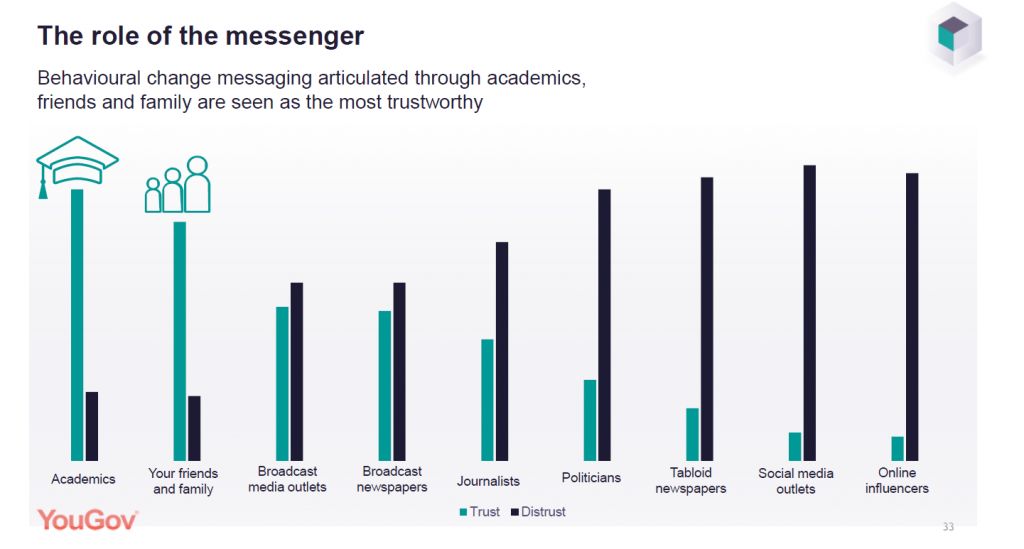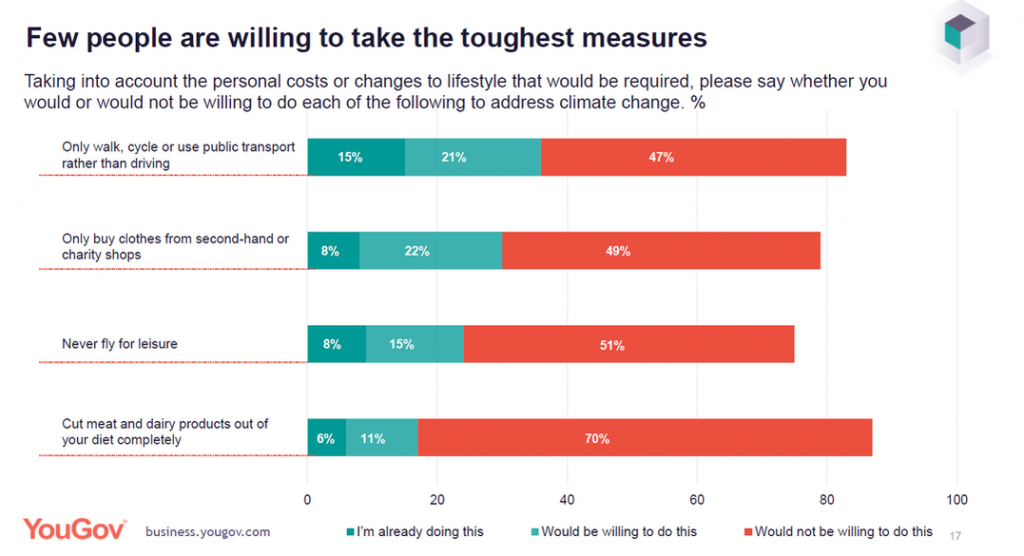
9 steps to encourage environmental behaviour change
by Livvy Drake
Talking about climate and agreeing that it’s an important issue is one thing, but what about changing behaviours and actions?
This can be particularly emotive if someone has just said that they care and then jump in the car for a 2-minute journey down the road to pick up some gravy granules! So how should you approach this?
Firstly, it is worth bearing in mind a couple of things about behaviour change:
a) The value-action and knowledge-action gap mean that knowledge or values don’t necessarily change behaviours.
b) Behaviours are driven by the:
- Habits and routines
- Comfort and convenience
- Social norms and expectations in social circles
- Infrastructure and systems around us
So how can you inspire behaviour change and encourage people to take action?
1. Avoid shaming or guilt-tripping people
This causes knee-jerk reactions, to remove the negative feelings. So people might take ineffective short-term action like off-setting as a reaction to the shame or guilt, but it will not impact long-term behaviour change. And with close family members, it will probably just lead to an argument!
2. Talk about your own actions and experiences
Again and again surveys show that the most trusted messengers for environmental issues and action are experts and friends and family. So talk about your own actions and the positive changes you’ve experienced.


3. Tell stories of other relatable people taking action
It may well be that you are the wrong messenger for your audience and in fact they need to hear about it from other sources they trust. Check out the Britain Talks Climate for tips on potential messengers for your nearest and dearest! And rather than arming yourself with a wealth of facts and stats on carbon emissions, tipping points and end of the world predictions, find local or British projects that are taking action, so people feel like their actions are not in vain and others around them are taking action.

“The only way you can make somebody change their mind isn’t by arguing with them, it’s not by telling them they’re bad. You’ve got to find a way to reach the heart and the best way to reach the heart is telling stories. Don’t be aggressive, nobody will change if you’re aggressive. They’ve got to want to change from within.”
Quote by Jane Goodall

4. Consider the other benefits you can communicate apart from environmental ones
In her research from viewers of a climate change documentary, Sabrina Mcormick found that talking about health, pollution and asthma were better communication concepts than carbon emissions and climate change.
And the Lancet (medical journal) reported that if the UK focused on the health benefits of climate positive actions:
- 100,00 lives could be saved from a better diet
- 38,500 lives through exercise and active travel
- 5,700 from reduced air pollution


5. Remember, people hate change and don’t want to give things up
The YouGov survey demonstrates that people don’t like the idea of giving up things completely. When people talk about no flying; the mind automatically starts to mourn the loss of all those sunny beach holidays and we are wired to be adverse to loss and avoid it (this is the principle of loss aversion).
Our brains also fear the unknown and uncertainty of change, which leads to status quo bias – where people value familiarity over something that could actually be better but is less well known.

Month-long challenges like Veganuary, or short-term trials (e.g. electric bikes) can overcome this by enabling people to try a new behaviour knowing that it is not forever; then afterwards when their fears and uncertainty are addressed, it is not so daunting to adopt the behaviour long-term.
6. Use the right language
Use words such as easy, quick and simple. Avoid toxic words like: should and must as these suggest effort and difficulty and shaming of people.
7. Lead by example – be the change you want to see!
Christmas is a great time to model the behaviours and ‘be the change’:
- Make delicious plant-based Christmas alternatives for people to try
- Request charity donations or City to Sea charity vouchers for yourself


8. Avoid overwhelm if people do ask for advice
Avoid overwhelming people with huge long lists (I recently saw a list of 75 ways to reduce waste). Instead, suggest people try one or two behaviour changes until they become a habit. And do it at a time when they have mental capacity to embed the behaviour.
9.Work together on triggers to make new behaviours easy
If someone is Discuss ways in which they could set things up in their existing environment that would make it easier to maintain their existing behaviours and hard to change. And come up with ways that they could make it easier for themselves to change. e.g. Making their bike as easy to access as their car. Planning some vegan meals and freezing them so they are available for a meat-free day.

How can you get to the heart of what actually motivates habits for people?
For more tips on how to communicate environmental and climate behaviour change, watch the webinar ‘ Adopting Motivating Behaviour Change Theory in Your Environmental Communications’ which was designed for environmental communicators who want to reach outside of the eco echo chamber.

You might also like:


